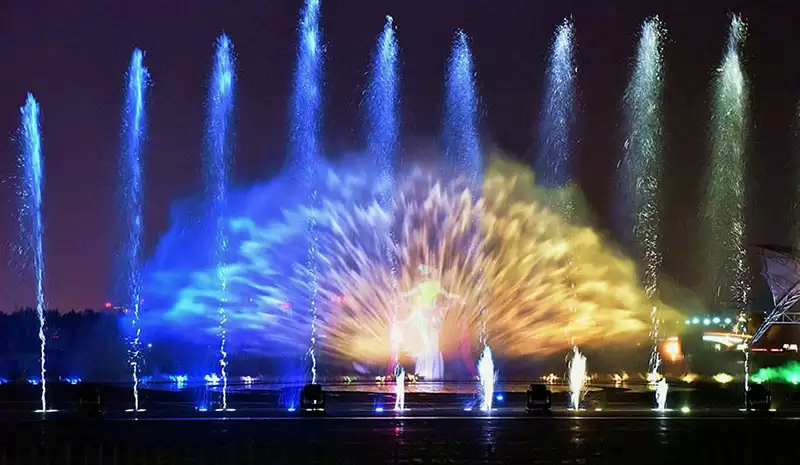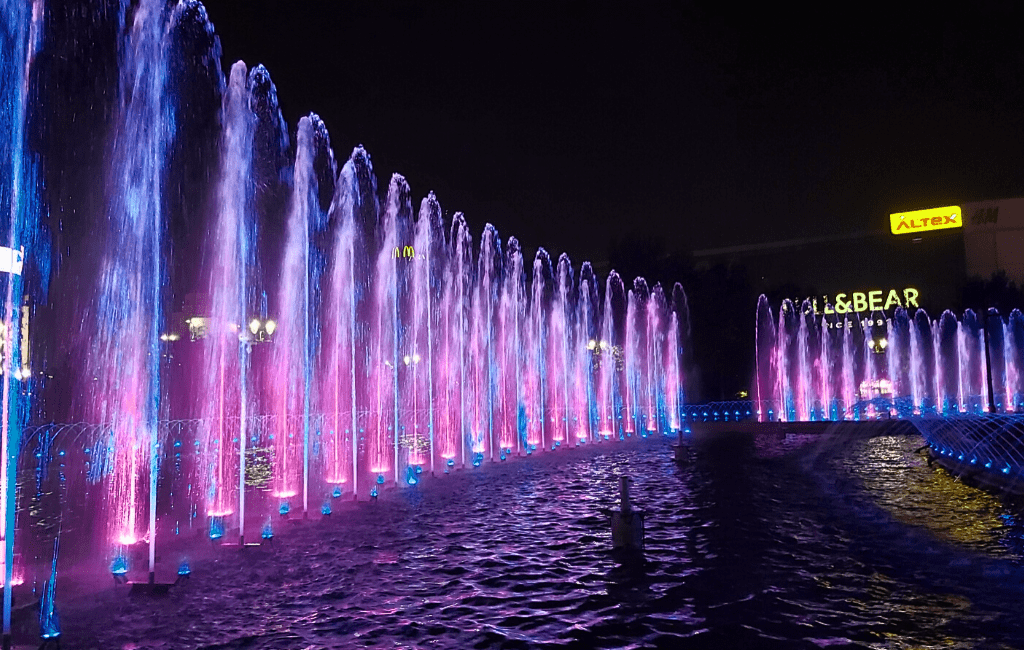News
The Differences Between Water Screen Projection and Dancing Fountains
- 2025-02-24
Water screen movies and musical fountains are both representatives of modern waterscape art. They create amazing visual and auditory effects through the combination of water, light and sound. Although they have similarities in expression, they are obviously different in specific implementation methods and application scenarios. Changsha Himalaya Music Fountain Equipment Co., Ltd. will discuss the differences between water curtain projection technology and musical fountains in detail to help readers better understand these two unique waterscape arts.
1. Overview
Water Screen Projection
Water Screen Projection uses special nozzles to atomize water to form a translucent water curtain as a projection screen for movies or images. This technology can project dynamic images onto the water curtain, creating a visual effect suspended in the air. Water curtain movies are often used for night performances in large-scale events, theme parks and public squares.
Musical Fountains
Musical fountains use computers to control fountain pumps, nozzles and lighting systems, so that water flow, lights and music change synchronously to form a dynamic dancing water show. Musical fountains are commonly seen in city squares, parks and shopping malls, and are an important landscape to attract tourists and citizens.
2. Technical Differences
Water Curtain Projection
Water Curtain Generation: Water curtain movies use high-pressure water pumps and special nozzles to atomize water into fine droplets to form a smooth water curtain.
Image Projection: Use a high-brightness projector to project images onto the water curtain to create a suspension effect.
Sound System: The sound system that matches the image playback provides synchronized sound effects.
Musical Fountain
Water Pump System: The water pump draws water from the pool and sprays it into the air through the nozzle to form various water flow shapes.
Nozzle System: Different types of nozzles control the shape and direction of the water flow to match the rhythm of the music.
Lighting System: LED lights and other light sources shine on the water flow to create colorful light and shadow effects.
Control System: The computer control system coordinates the work of the water pump, nozzle and light in real time, and changes synchronously with the music.


3. Application Fields
Water Screen Projection
Water curtain movies are usually used for large-scale events and festival performances, such as opening ceremonies, closing ceremonies, theme park night shows, etc. Due to its stunning visual effects and innovative forms of expression, water curtain movies can attract a large number of audiences in a short period of time and enhance the influence of the event.
Musical Fountains
Musical fountains are widely used in city squares, parks, shopping centers and tourist attractions. Its performance time is usually fixed and it is performed many times a day, attracting tourists and citizens to watch, becoming an important part of daily leisure and entertainment.

4. Water Effect Display
Water Screen Movie
Visual effect: The uniqueness of water curtain movie lies in its suspended image effect. The audience can see the image emerge on the water curtain, as if floating in the air.
Interactivity: Through special effects and interactive devices, the audience can participate in the performance and enhance the experience.
Musical Fountain
Dynamic waterscape: The musical fountain presents a colorful water dance performance through the ups and downs of water flow, the changes of lights and the rhythm of music.
Audio-visual experience: The musical fountain combines the three elements of water, light and sound to create a comprehensive audio-visual enjoyment that makes people happy physically and mentally.
As two modern waterscape art forms, water curtain movies and musical fountains each have unique technologies and performance effects. Changsha Himalaya Music Fountain Company has rich experience in the design and implementation of these two waterscape arts. By understanding their differences and characteristics, these two technologies can be better applied to add charm to urban landscapes and large-scale events.


